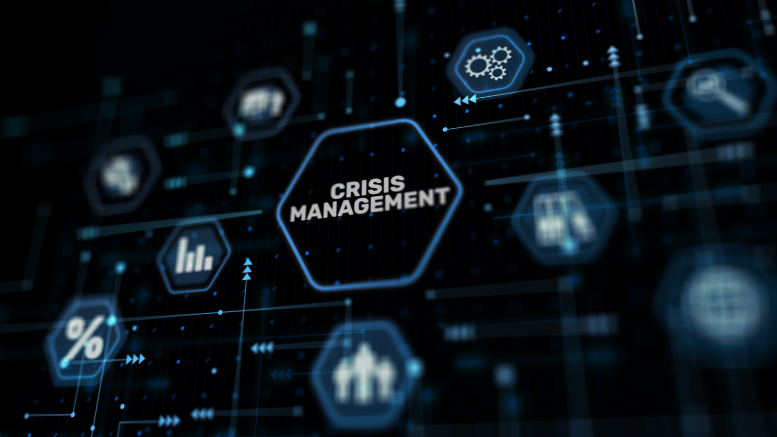Redefining Crisis Management Training: The Potential Pitfalls of Over-reliance on Virtual Training
In the rapidly evolving field of crisis management, the shift towards virtual training, accelerated by the pandemic, has undoubtedly expanded accessibility and immediacy in training programs.
As the landscape of external risk factors evolves and the global ‘perma-crisis’ continues, maintaining the competence of crisis management teams becomes even more important.
The essence of effective crisis management is replicating the physical, emotional, and psychological demands of a crisis so that crisis management team members can prepare for how they need to perform in the moment. Can this ever be fully replicated in a digital environment?
In this article, we delve into the critical balance required for training in crisis management and question whether we have become too reliant on virtual training as our primary method of maintaining and developing our crisis management team's skillset.
Maintaining Competence in Crisis Management Teams
The crisis management community must frame the conversation around the sufficiency of virtual training for crisis management, its advantages and limitations, and the potential need for a more blended approach to learning within the context of continuous global crises.
The cornerstone of navigating through uncertain times and crises lies in a team's competence and its individuals' performance. However, this can often be challenging for organisations.
Crisis Management Teams frequently see changes in structure and roles as people transition in, out and across organisations. As a result, the continuity of experience within the team fluctuates. Most organisations will conduct crisis training and exercises every 12 to 18 months alongside smaller, less frequent sessions subject to budget and time constraints. Consequently, a knowledge gap emerges.
This gap becomes particularly noticeable if key roles transition or a large proportion of the team transitions. The resulting change caused by these transitions is often ineffectively managed with no handovers or training plan implemented for the new team members, especially if this happens outside a scheduled training cycle; the disparity in team members' levels of preparedness introduces significant risk. If a crisis occurred in such circumstances, how ready would a crisis management team be to hit the ground running? This frequently occurring situation complicates ensuring an organisation's crisis resilience. Online training is often a quick fix to fill that gap.
Performing in the moment – why practice matters
For an organisation, navigating a crisis represents the ultimate test of performance under pressure. The effectiveness of crisis management hinges on the depth and quality of preparation and practice that precede such critical moments. This practice goes far beyond the simple repetition of tasks; it's a holistic and comprehensive approach that encompasses the physical readiness, mental acuity, and emotional resilience necessary to navigate the volatile and unpredictable nature of crises.
It's about ensuring that teams are not only familiar with crisis protocols and procedures but are also psychologically prepared to handle stress, make rapid decisions, and maintain composure under intense scrutiny.
In the context of crisis management, practice embodies a strategic and multifaceted preparation process. It involves rigorous simulation exercises that replicate real-world crisis scenarios, allowing teams to hone their skills in a controlled, high-pressure environment. These simulations are designed to build confidence by reinforcing the team's ability to apply their knowledge effectively when it matters most.
Additionally, practice sessions are crucial for developing resilience, as they expose teams to the potential chaos of a crisis, teaching them to remain focused and adaptive despite the pressure. By systematically addressing the cognitive, emotional, and physical demands of crisis situations, practice empowers individuals and teams to overcome performance anxiety and focus during actual emergencies.
Ultimately, the principle of practice in crisis management serves as the crucial link between potential and operational excellence. It ensures that when the critical moment arrives, organisations are not merely reacting to a crisis but are executing well-rehearsed strategies with precision and confidence. This level of preparedness is what distinguishes organisations that successfully manage crises from those that falter under the pressure.
The Limitations of Virtual Training
Virtual training has gained popularity in recent years due to its convenience and cost-effectiveness and offers numerous advantages, including scalability and the ability to connect learners globally.
However, one of the primary drawbacks of virtual training is the lack of real-life simulations and hands-on experience which do not address the need to practice for how you need to perform in a pressure moment. Virtual training often relies on hypothetical scenarios or computer-based simulations, which can only partially replicate real-world crises' complexities and pressures.
Furthermore, virtual settings can lead to multitasking and disengagement among participants, detracting from the immersive learning experience essential for preparing for actual crisis situations.
When it comes to crisis management, the nuances of real-life experiences, the pressure of decision-making under stress, and the dynamics of team collaboration in crises are palpably different in the flesh than through a screen.
The benefits of in-person training for crisis management
The visceral experiences from in-person training—such as participating in live simulations, handling equipment, and engaging in face-to-face debriefings—are irreplaceable. These experiences create 'mental scars' that form the basis of muscle memory, which is crucial when responding to actual events. By their nature, virtual settings struggle to replicate the intensity and immediacy of such situations, leading to a potential dilution of the learning experience.
In addition, the development of relationships and trust that happen in peacetime and are critical in a response can't be achieved through a screen. This is especially significant for crisis teams that may not regularly work together in day-to-day business.
Without the opportunity to experience the adrenaline, urgency, and critical decision-making in high-pressure situations, individuals may not develop the necessary skills to respond effectively during a crisis. Additionally, virtual training typically lacks the physical aspects of crisis management, such as setting up command centres, managing logistics, and coordinating with external stakeholders.
A Blended Approach: Marrying Virtual and Physical Training
Acknowledging the limitations of virtual training does not diminish its value but rather highlights the need for a balanced approach. It is unrealistic to imagine that organisations can stop their virtual learning programmes and shift their focus entirely to face-to-face.
A blended training model combines the best of both worlds and is potentially a more realistic goal. This model leverages the accessibility and flexibility of virtual training while ensuring that critical hands-on experiences are not lost.
For instance, virtual reality simulations can offer a middle ground, providing immersive experiences closer to real-life scenarios.
These innovative training technologies, such as Virtual Reality, Augmented Reality and the Metaverse, create realistic, context-based training scenarios and give participants the sensation of being physically present, enhancing the learning experience and information retention.
Moreover, the engagement issue prevalent in virtual training sessions—where participants might multitask or disengage—can be mitigated through these interactive and immersive virtual experiences. These technologies are yet to become mainstream in crisis management training; however, as organisations continue to come under cost pressures and the technology costs come down, their integration of these tools may become more widespread.
Even organisations using these technologies should still supplement their training programmes with physical drills and exercises. By combining the advantages of remote learning, such as flexibility and cost-effectiveness, with the practical experiences gained through in-person training, organisations can create a comprehensive training program that addresses the diverse requirements of crisis management. But there must be a balance.
Exercises: the ultimate competency check
A discussion on training would only be complete by mentioning the importance of exercises. One of the most important functions of exercises is to facilitate the learning and embedding of lessons identified in previous exercises or incidents and identify new lessons that can be addressed before a future incident occurs. Exercises that assess and evaluate current capabilities and prioritise a rigorous review process offer a practical and impactful tool for ensuring crisis response readiness and the competence of crisis management teams.
A programme of deliberately and thoughtfully designed exercises may incorporate online elements as well as face-to-face elements. Some examples of where this would work well, are testing the initial hours of a middle-of-the-night response or exercising a globally dispersed
crisis management team, where they need to be practised at working together as a team online). Once again it is all about the right balance.
Successful exercises should be approached with a mindset geared towards growth and candid assessment, ensuring that organisations meet findings with actionable solutions.
Exercises offer a transparent evaluation of an organisation's readiness and resilience and are the best way to create the right ‘pressure’ environment to fully test and train a team's mental resilience in a crisis.
Conclusion: finding the right balance for crisis management training
While virtual training offers significant advantages in terms of cost-effectiveness, accessibility, and immersive learning experiences, it also presents certain challenges. These include reduced human interaction, technical limitations, and the potential inadequacy in replicating the full spectrum of real-world crisis scenarios.
Integrating human elements and field experience remains paramount to developing comprehensive crisis management capabilities, emphasising the necessity of balancing virtual advancements with traditional, in-person training techniques.
Maintaining and building the competence of a Crisis Management Team is not merely about compliance or meeting training quotas; it's about ensuring that our teams have the depth of experience and resilience to respond effectively when faced with a crisis.
Ultimately, the effectiveness of crisis response teams hinges not just on their technical skills but on their ability to function under pressure, communicate effectively, and make critical decisions in real time. Crisis management teams can best hone these soft skills in an environment that mimics real-life pressures as closely as possible. The concern with an over-reliance on virtual training is that it might lead to a workforce that is theoretically knowledgeable but practically underprepared for the demands of real-world crisis management.
The most effective way to prepare for an incident is to practice in realistic, pressured simulations. The only way to achieve this is face-to-face. Time and cost constraints may lead companies to want to do more training online. However, organisations should recognise the limitations of online and be deliberate in its use.
There are ways for companies to successfully navigate the cost and time constraints (e.g. through innovative use of technology and selective use of computer-based training), but those responsible for crisis management in their organisations should be under no illusion - there are no shortcuts or hacks to preparing a team to perform under pressure in a crisis situation.
If cost is the primary driver for opting for an online-only approach to crisis management training, organisations will do well to remember that the investment needed to maintain and build crisis preparedness pales in comparison to the costs of a botched response.










